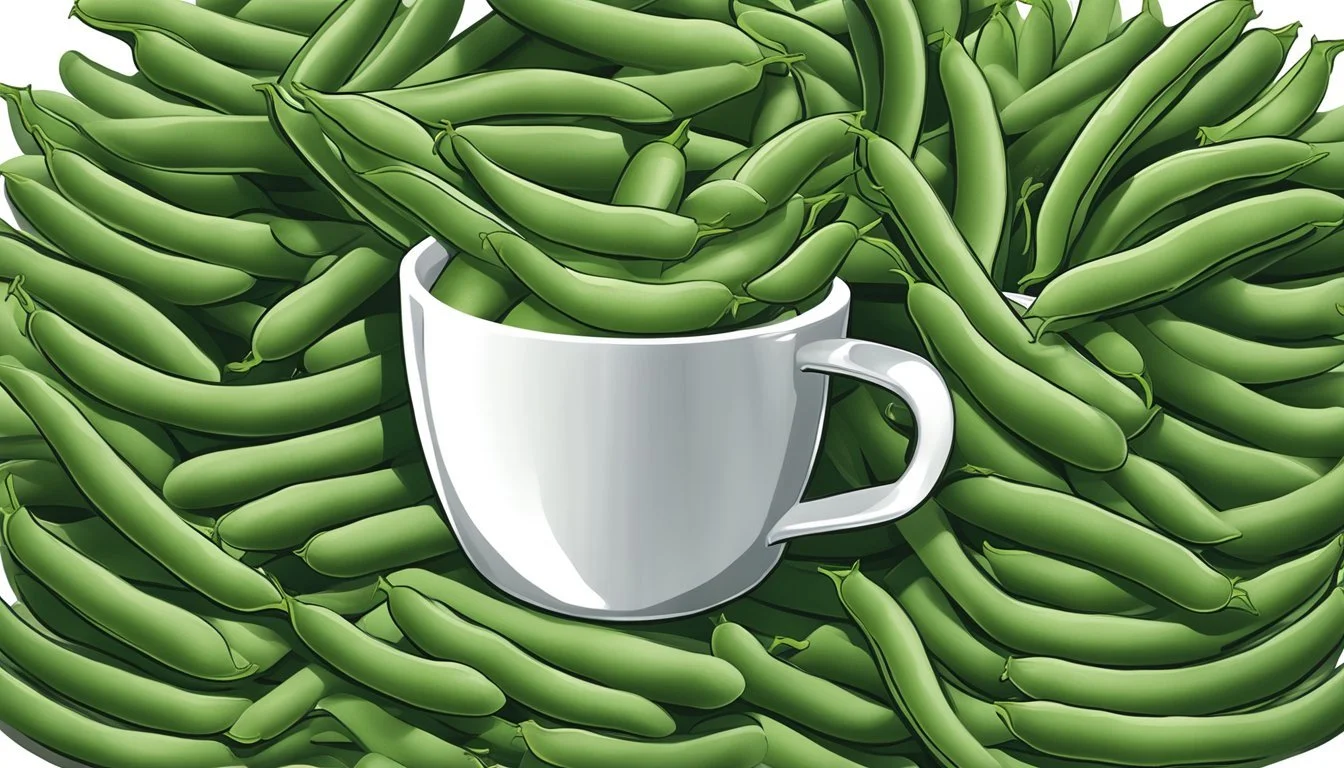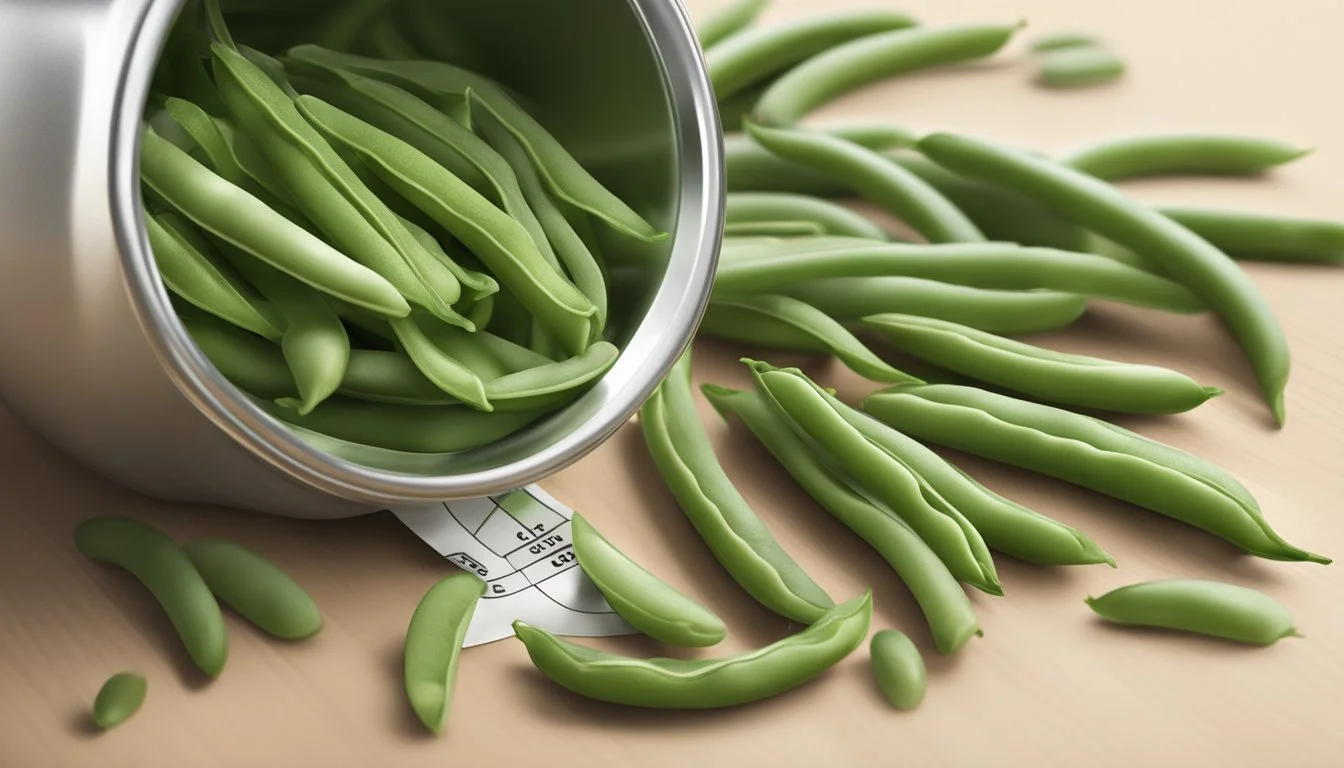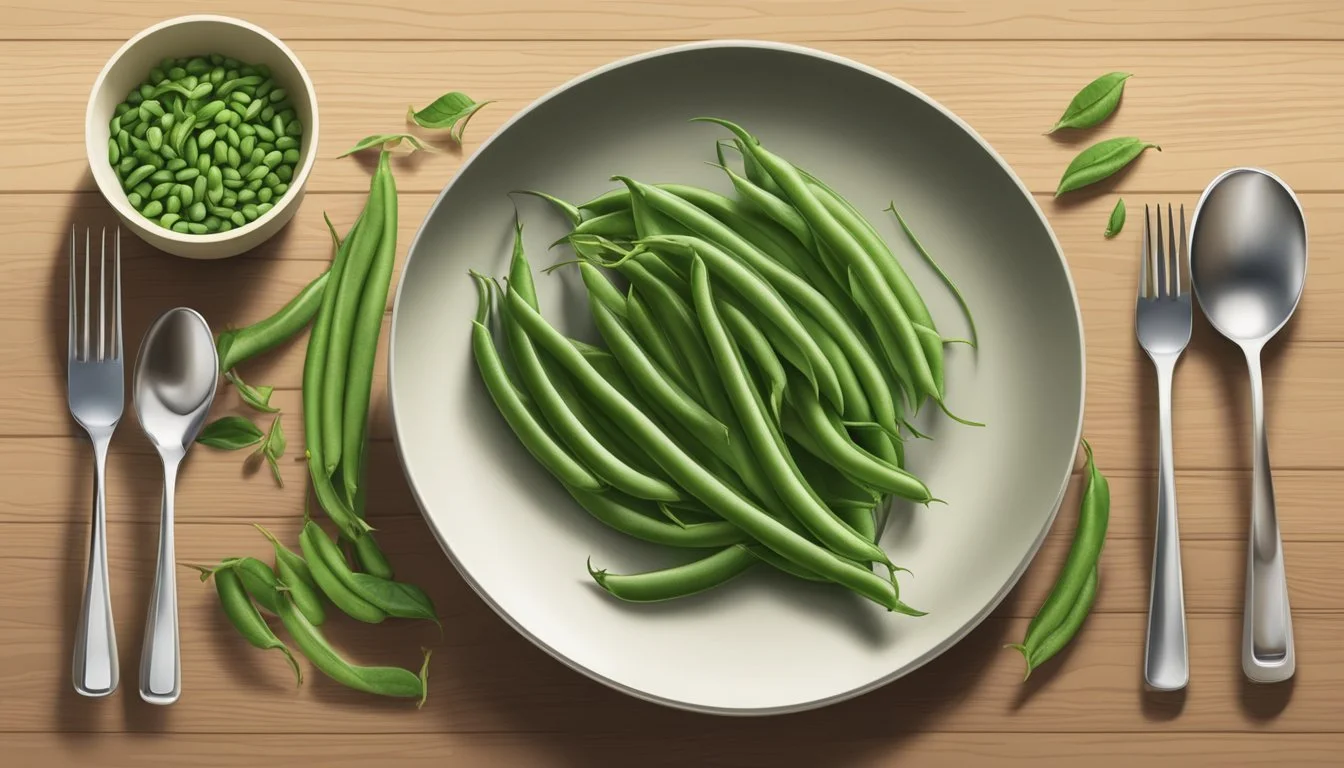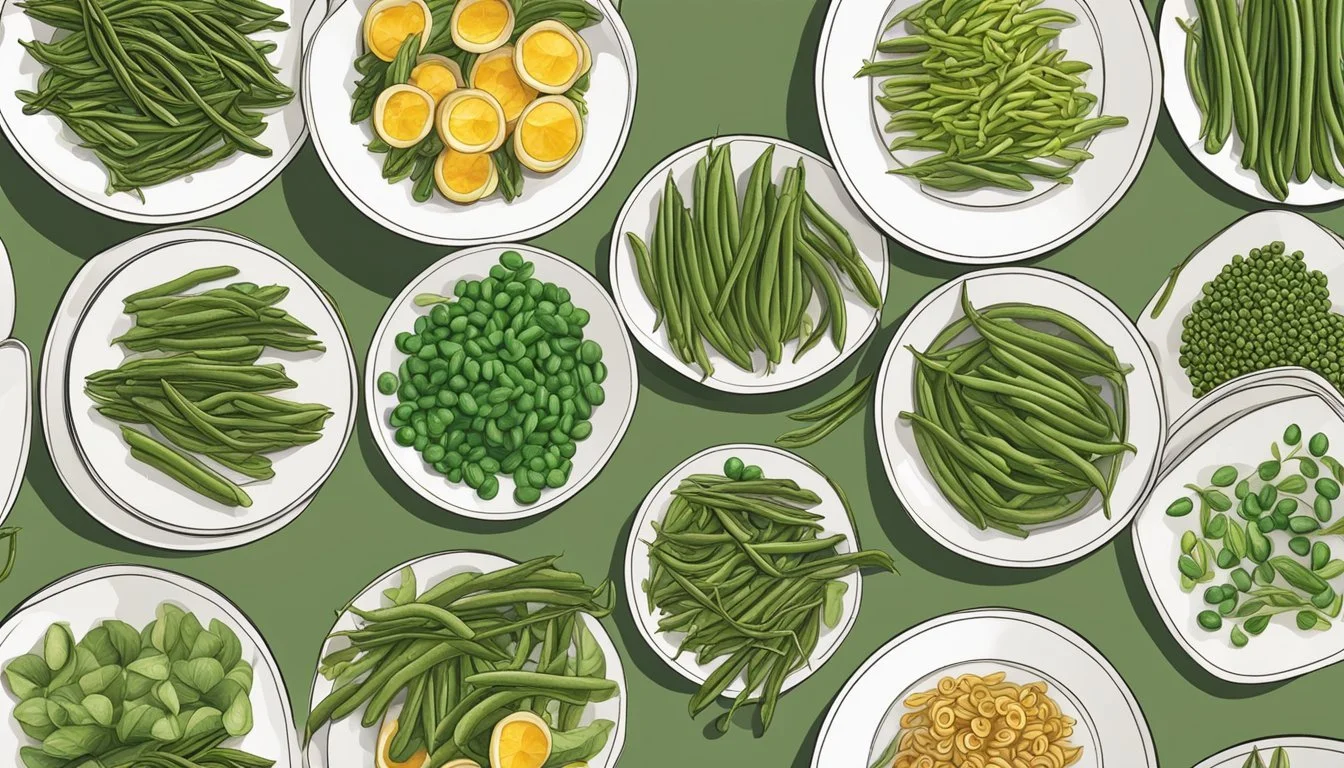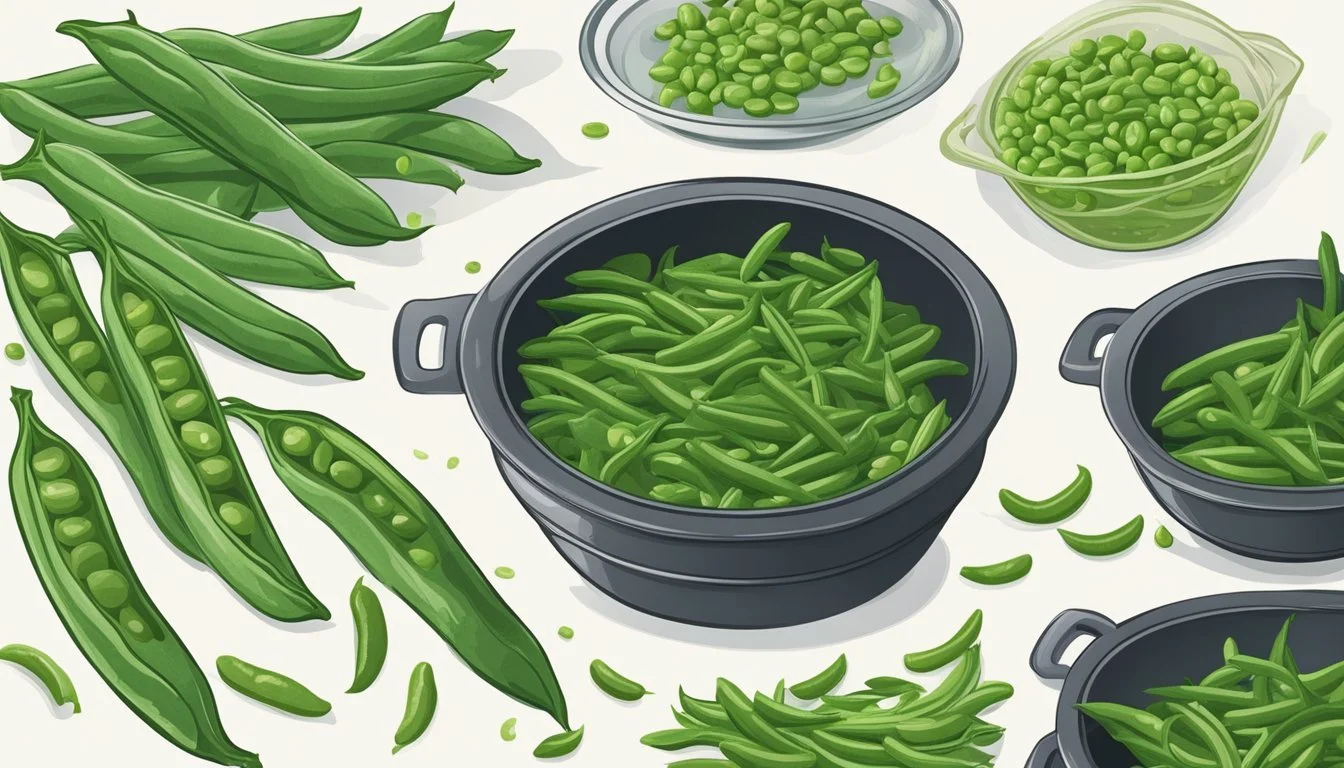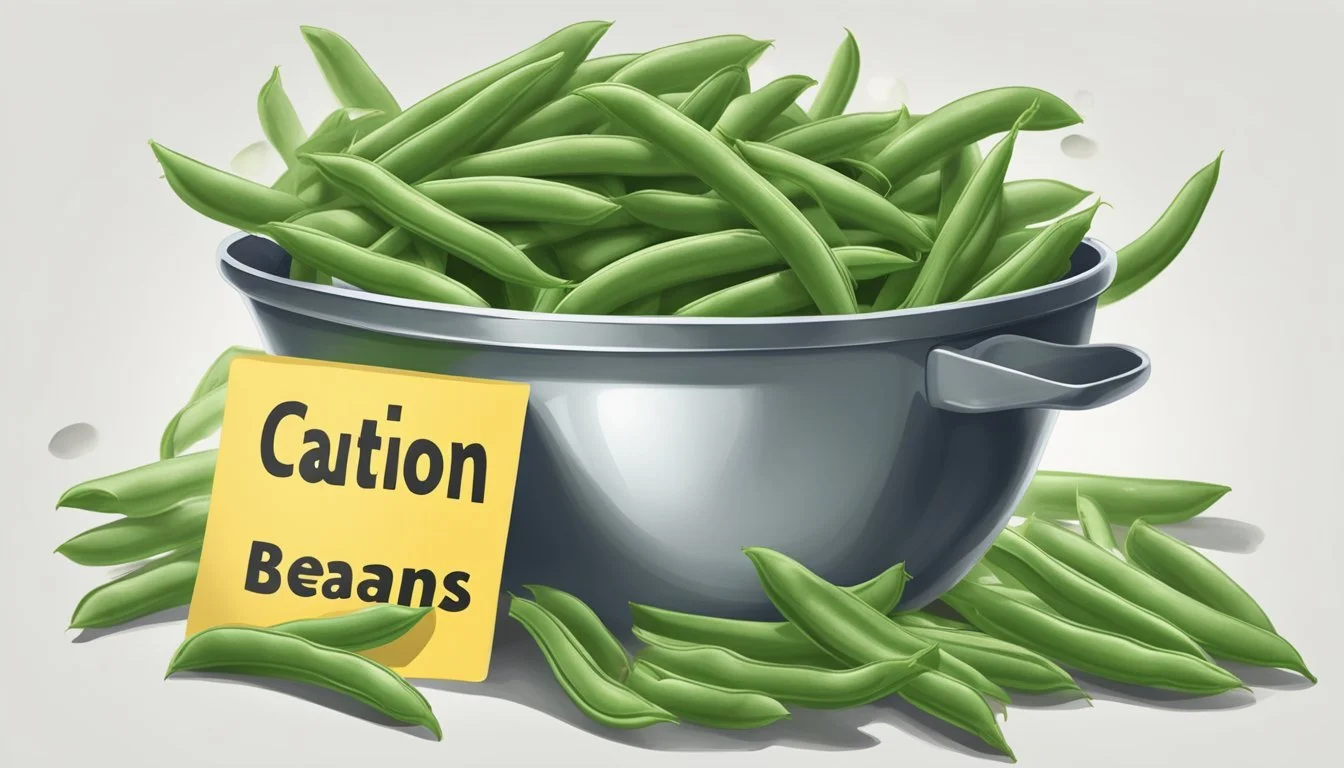How Many Cups of Green Beans Per Day Is Too Much?
Understanding Healthy Limits
Green beans are a staple vegetable with a significant nutritional profile. They are rich in fiber, vitamins, and minerals, while also being low in calories, which makes them a favorable addition to a balanced diet. Similar to other vegetables, green beans provide health benefits when included as part of a diverse and nutritious diet. These benefits include the potential to support heart health and to contribute to a lower risk for chronic diseases such as diabetes.
Determining the ideal intake of green beans depends on individual dietary needs and health goals. While they can be an important component of one's daily vegetable consumption, there is no specific recommendation exclusively for green beans. The Dietary Guidelines for Americans suggest making half your plate fruits and vegetables, with a variety of types and colors to ensure a broad intake of nutrients.
However, it is essential to consider moderation, even with healthy foods. The nutritional advantages of green beans are best obtained when they are part of a varied diet that includes a wide range of fruits, vegetables, and other nutrient sources. It is also crucial to acknowledge individual tolerance, as excessive consumption of fiber-rich foods like green beans can lead to gastrointestinal discomfort for some people.
Nutritional Profile of Green Beans
Green beans provide a multitude of essential nutrients and boast a low-calorie content, making them a healthy addition to any diet. They are particularly notable for their vitamins, minerals, and dietary fiber.
Key Nutrients and Minerals
Green beans are a nutrient-dense vegetable offering significant amounts of vitamin K, which is essential for bone health and blood clotting. They also supply a good source of vitamin C and vitamin A, both of which are important antioxidants that help the body's immune function and vision. These beans provide valuable minerals such as iron, essential for blood production, and potassium, which aids in blood pressure regulation. Furthermore, they contain folate, necessary for cell growth and DNA formation, and a reasonable amount of magnesium, which supports muscle and nerve function. Here's a list of the key nutrients found in green beans per 1 cup serving:
Vitamin K: Crucial for blood clotting and bone health
Vitamin C: Antioxidant that supports the immune system
Vitamin A: Benefits vision and the immune system
Iron: Essential for the creation of red blood cells
Potassium: Helps control blood pressure levels
Folate: Important for DNA synthesis and cell growth
Magnesium: Supports muscle and nerve function
Caloric and Carbohydrate Content
Green beans have a relatively low calorie and carbohydrate content. One cup of green beans contains approximately 31 calories and 7 grams of carbohydrates, which include both starch and dietary fiber. The fiber in green beans can aid digestion and contribute to satiety, which may help with weight management. It's also noteworthy that green beans are low in fat, providing only 0.2 grams per cup. Here is a quick breakdown of the caloric and carbohydrate content in a 1 cup serving:
Calories: Roughly 31
Total Carbohydrates: About 7g, with a portion from dietary fiber
Dietary Fiber: Helps with digestion and fullness
Fat: Minimal, with only 0.2g per serving
The nutritional profile of green beans, with their combination of vitamins, minerals, fiber, and low calorie and carbohydrate content, makes them an excellent food choice for those seeking to maintain a healthy diet.
Health Benefits of Regular Consumption
Regular consumption of green beans is associated with a myriad of health benefits, including improvements in digestive health due to their fiber content, a reduction in the risk of chronic diseases, and a bolstering of heart health.
Reduced Risk of Chronic Diseases
Green beans are a valuable source of antioxidants and phytonutrients, which may contribute to cancer prevention. This versatile vegetable is linked with a lower risk of prostate cancer specifically. The presence of antioxidants in green beans helps in disease prevention, potentially lowering the risk of conditions such as type 2 diabetes.
Digestive Health and Fiber Content
Rich in dietary fiber, green beans aid in supporting the digestive system. Fiber is essential for maintaining regular bowel movements and can be beneficial for weight loss. It also helps to stabilize blood sugars, which is particularly important for individuals managing diabetes.
Heart Health and Blood Pressure
Consuming green beans can have a positive effect on heart health. They contain no cholesterol and are low in fat, which is beneficial for maintaining a healthy heart and blood vessels. The fiber in green beans might also assist in lowering blood pressure and improving cholesterol levels, both of which are important factors in heart disease prevention. Green beans' nutrient profile, including vitamins and minerals essential for maintaining bone health, further underscores their role as a healthy food choice in any diet.
Recommended Intake and Moderation
Understanding the recommended intake of green beans and the potential risks associated with their overconsumption is essential for maintaining a healthy diet.
Dietary Guidelines for Adults
According to the Dietary Guidelines for Americans, adults should incorporate a variety of vegetables into their diet, including green beans, as part of a healthy eating pattern. While specific recommendations vary based on age, sex, and level of physical activity, a general guideline is to consume at least 2 to 3 cups of vegetables per day. Green beans can contribute to this total. They are low in calories and rich in nutrients, making them a healthy choice for most individuals seeking to manage their weight and prevent obesity.
Example servings for adults (Daily):
Women (19-50 years): 2.5 cups
Women (51+ years): 2 cups
Men (19-50 years): 3 cups
Men (51+ years): 2.5 cups
Moderation is key, even with nutritious vegetables such as green beans, to ensure a balanced intake of all necessary food groups.
Risks of Overconsumption
While green beans are a healthy addition to most diets, excessive consumption may lead to certain health issues. A high intake of green beans can result in an increased dietary fiber intake which, in large amounts, may cause digestive discomfort, such as gas or bloating. For individuals with existing high blood pressure, monitoring the sodium content in canned or processed green beans is necessary. While fresh green beans contain minimal sodium, some canned varieties may contain added salts, potentially exacerbating high blood pressure if consumed in large quantities.
It is prudent for individuals to be mindful of the portion sizes and the preparation methods of green beans to manage their overall dietary sodium and fiber intake. This helps to avoid unintended health complications while still reaping the benefits of this nutritious vegetable.
Green Beans in Various Diets
Green beans are a nutritious addition to various diets, offering plant-based protein, complex carbohydrates, and a rich array of micronutrients. They can be seamlessly integrated into diverse eating patterns, supporting both overall health and specific dietary goals.
Plant-Based and Vegetarian Inclusion
In plant-based and vegetarian diets, green beans serve as a valuable source of nutrients. They are not only rich in plant protein but also provide essential vitamins and minerals that may otherwise be limited in diets excluding meat. For example:
Plant Protein: A vital component for maintaining muscle health and overall bodily functions.
Micronutrients: Including vitamin C, vitamin K, folate, and iron, vital for various bodily processes.
Green beans can be included in these diets in multiple forms:
Raw: In salads or as a crunchy snack.
Cooked: Steamed, boiled, or stir-fried as a side dish.
Legume Family: As part of the legume family, they complement other beans and lentils in providing a full spectrum of amino acids.
Inclusion in Weight Loss Diets
Green beans are a fitting choice for weight loss diets due to their low calorie yet nutrient-dense nature. They are high in fiber, which aids in satiety, and have a low glycemic index, impacting blood sugar levels minimally. Key points include:
Low Calories: Helps in creating a calorie deficit without compromising nutritional intake.
Complex Carbohydrates: Offer a steady release of energy, aiding in appetite control and reducing cravings.
In a weight loss diet, green beans can be incorporated as:
A low-calorie filler: To add volume to meals without significantly increasing the calorie count.
Part of a balanced plate: Paired with other vegetables and a lean protein source for a complete meal.
By providing both bulk and nutrients, green beans can be an integral part of a weight loss eating plan, ensuring a person feels full and nourished.
Green Bean Preparation and Recipes
Green beans are a versatile ingredient that can be prepared in various ways to complement a wide range of dishes. They are commonly included in salads, soups, stews, and the classic green bean casserole, and can be adapted to fit into even more creative recipes such as tacos or blended into hummus.
Cooking and Salad Options
Cooked green beans are a staple in many recipes. They can be steamed, boiled, or sautéed in olive oil with a bit of garlic to enhance their flavor. For a crisp, tender texture, green beans should be cooked for about 5 to 7 minutes; this ensures they remain bright and vibrant. Once cooked, they can be added to:
Salads: Toss them with lettuce and your dressing of choice.
Tacos: Include as a crunchy element in your filling.
Soups and Stews: Incorporate green beans for added nutrition and texture.
Green Bean Casserole: Combine with cream of mushroom soup and crispy fried onions.
Canned vs. Fresh Green Beans
Fresh Green Beans Canned Green Beans Require washing and trimming Pre-cleaned and ready to use Longer cooking time needed Quicker to prepare due to being pre-cooked Typically more flavorful May contain added sodium
When deciding between canned and fresh green beans, consider the intended use. Fresh green beans offer a more pronounced flavor and are preferable for dishes where the bean is the star, such as in salads or as a side dish. In contrast, canned beans come in handy for quick meal prep or for recipes like stews where the beans will be cooked for an extended period. Canned beans can also be drained and rinsed to reduce the sodium content before being mixed into dishes like hummus.
Varieties and Buying Guide
When selecting green beans, also known as snap beans or string beans, one should consider the different types available as well as proper selection and storage techniques to ensure freshness and nutritional value.
Types of Green Beans
Green beans come in a variety of shapes and sizes, with two primary categories: bush beans and pole beans. Bush beans tend to be compact and require no support, while pole beans grow vines and need to climb. Within these categories, several popular varieties include the slender 'French' or 'haricot vert', the traditional 'Blue Lake', and the purple-hued 'Royal Burgundy', among others. It's important to note that unlike dried beans such as black, pinto, and kidney beans, green beans are harvested and consumed while still young and tender, thus they are categorized with other fresh vegetables rather than protein-rich legume fruits like chickpeas.
Selection and Storage Tips
A successful purchase starts with choosing firm, vibrant, and unblemished green beans. They should snap crisply when bent. To store, one should keep green beans refrigerated in a plastic bag and use them within a week. Avoid washing until just before preparation to prevent potential spoilage. Freezing is also an option for long-term storage, preferably after blanching to preserve the texture and flavor. It is essential to refrain from purchasing wilted or browned green beans as this indicates they are past their prime.
Potential Adverse Effects and Interactions
When consuming green beans, individuals should be aware of the potential digestive issues and the impacts on blood sugar levels, particularly if they have diabetes or are otherwise monitoring their glycaemic response to foods. It's important to consider the fiber content, which can affect digestive health, as well as the interaction of certain compounds found in green beans that could influence blood sugar control.
Digestive Issues and Lectins
Green beans are a good source of fiber, which can support digestive health. However, a large intake of fiber can lead to gas and digestive discomfort in some individuals, especially if they are not accustomed to high-fiber diets. It's recommended to increase fiber intake gradually to mitigate these effects.
Additionally, green beans contain lectins, proteins that can resist digestion and may affect the absorption of nutrients. Excessive consumption of lectins can lead to digestive issues. Some methods, such as cooking, can reduce lectin content in green beans, thereby minimizing potential adverse effects.
Impact on Blood Sugar and Diabetes
Green beans have a relatively low glycemic index (GI), meaning they typically have a mild impact on blood sugar levels. This makes them a suitable option for those managing diabetes. However, the blood sugar response can vary based on individual sensitivities and the presence of other macronutrients in the diet, such as fat, sugar, and salt.
Despite the low GI, people with diabetes should still monitor their green bean consumption to ensure it aligns with their dietary needs and doesn't lead to an unintended increase in blood pressure, especially if the beans are prepared with added salt. Since green beans are low in saturated fat and have no added sugar, they aren't associated with the adverse effects typically connected to these nutrients when consumed in moderation.
Conclusion
In terms of nutrition, green beans are a healthy food choice, rich in vitamins such as thiamin and riboflavin. They also contribute valuable dietary fiber which is integral for gut health. However, moderation is crucial in any diet to prevent adverse effects and ensure a balance of nutrients.
USDA guidelines suggest filling half your plate with fruits and vegetables, indicating the significance of green beans as part of a healthy diet. Still, the specific quantity depends on individual dietary needs. Typically, a serving size is about 1/2 cup of green beans.
Excessive consumption can lead to:
Surplus intake of fiber, potentially causing digestive discomfort.
High levels of chlorophyll might interact with medications due to its impact on homocysteine levels in the blood.
Regarding chronic diseases, green beans contribute positively by supporting heart health and potentially lowering mortality associated with degenerative conditions. Moreover, the nutrients in green beans may aid in the prevention of mental health issues, including depression.
Table: Recommended Green Bean Intake
Population Segment Daily Serving Size Average Adults 1/2 to 1 1/2 cups Active Adults 1 1/2 to 2 cups Children 1/2 to 1 cup
In conclusion, while there is no explicit "too much" threshold, green beans should be included as part of a varied and balanced diet. Individuals should pay attention to their body's responses and dietary tolerances to determine the optimal intake for their health.

